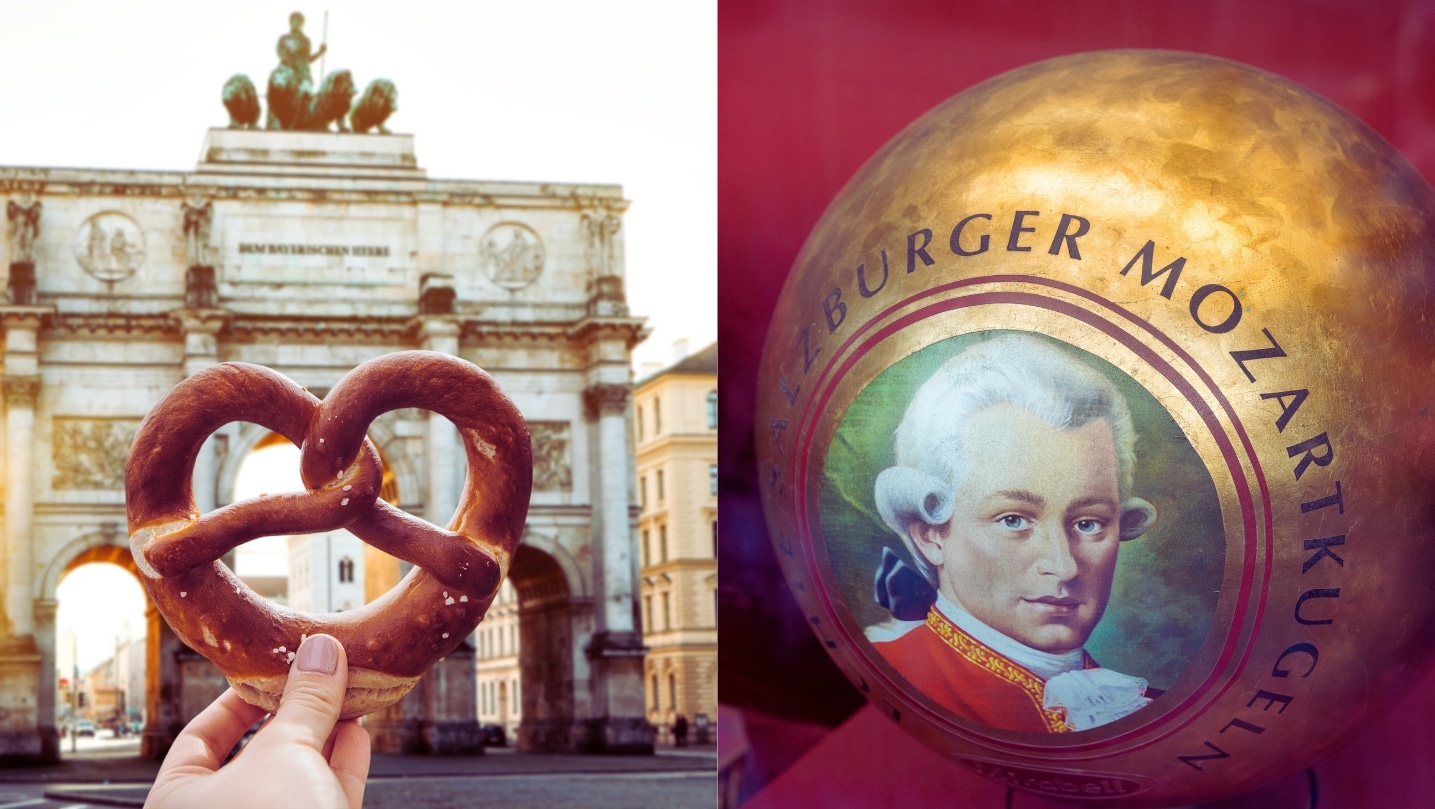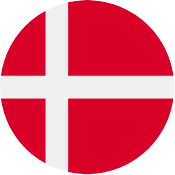
Germany and Austria: 5 Crucial Language Differences To Keep in Mind
Cross the border into Austria, and you’ll find the German language takes on a unique flavour. Is my German good enough for this region? you might ask yourself, contemplating the transition from the crisp articulation of Hochdeutsch to the melodic lilt of Austrian expressions. Here, a Paradeiser is not an exotic dancer, but the word for “tomato” (Tomate in standard German), and if someone suggests you try some Palatschinken, don’t let the term Schinken (“ham”) confuse you: it’s actually a thin pancake similar to French crepes.
Indeed, German is the native language in both countries, but the Austrian dialect has its own particularities that can trip up learners. To help you better understand these linguistic nuances, we’ll explore five essential differences between German and Austrian that will take your language skills to the next level.

Quick overview: Geography, culture, and historical ties
It’s a hefty challenge to distil the essence of Germany and Austria’s bond into a neat little package – so much so that something’s bound to get left out. So, take the following snapshots as a mere introduction to the complex dynamic between these two countries.
- Nestled in the heart of Central Europe, Germany and Austria aren’t just neighbours; their border is a gateway to a shared history and culture, alongside connections to nations like Switzerland and the Czech Republic.
- Austria’s version of the German language carries its own signature tune, particularly the Viennese dialect. Its distinctive, almost sing-song quality sets it apart from the standard German spoken in Germany.
- The historical bonds of Germany and Austria stretch back to a time when they were intricately linked under the Holy Roman Empire, with the Austrian Habsburgs reigning alongside German nobility, shaping much of Europe’s destiny.
- The resonance of classical music within both nations cannot be overstated, as Germany and Austria have been the cradle for many musical maestros. While Germany boasts the brilliance of Bach, Austria prides itself on the timeless works of Schubert.
- Architecturally, the skylines tell tales of shared Gothic and Baroque influences, yet each country has nurtured its flair – from the imposing Brandenburg Gate in Berlin to the storybook allure of Salzburg’s Hohensalzburg Fortress.
- Cultural festivals present another area of shared heritage yet distinct expressions; consider the world-famous Oktoberfest in Germany and Austria’s equally vibrant Salzburg Festival.
Now, let’s take a close look at some linguistic nuances that distinguish the German spoken in Germany and Austria.
Sign up for our offers
Exclusive discounts on your course with Cactus directly on your inbox!
Austrian German vs. “German German”: What sets them apart?
Was die Deutschen und die Österreicher trennt, ist ihre gemeinsame Sprache. (“What separates Germans and Austrians is their shared language.”)
This quote by Austrian writer and journalist Karl Kraus highlights the unique and sometimes complicated relationship between Germany and Austria when it comes to language. In essence, they’re united by the same words but often divided by how they use them.
Here are five key differences to be aware of as a language learner:
1. Pronunciation peculiarities: More than just German accents
Standard German spoken in Germany and Austrian German are not as different as, say, American English and British English. However, some subtle pronunciation differences can be tricky for non-native speakers. Here are a few hallmark characteristics:
- The “ß” (scharfes S) sounds like [s] in every position, even when it’s at the end of a word; take Fuß (foot), which is articulated as [foos].
- Austrian German is characterised by extended vowels, giving it a harmonious, song-like quality.
- In words beginning with “r”, this letter is rolled more distinctly than in standard German.
- At the start of words, the letter “g” often takes on a [k] sound, as heard in the pronunciation of gemacht (made).
2. Vocabulary variations: Differing terms and phrases for the same things
Dive deeper into the German language, and you’ll find many regional variations. Austrians will greet you with Grüß Gott, a religiously-infused phrase meaning “God’s greeting,” whereas Germans stick to the secular Guten Tag (good day). Other examples of vocabulary differences include:
- Semmel (Austria) vs. Brötchen (Germany) – Both mean a small bread roll.
- Mahlzeit (Austria) vs. Guten Appetit (Germany) – Said before a meal.
- Klo (Austria) vs.Toilette (Germany) – Two words for “loo.”
3. Beware of false friends: Similar words with different meanings
Even the closest of linguistic cousins have their squabbles. In German, words that look and sound alike can mean entirely different things across borders. Here are examples where Austrians and Germans might misinterpret each other:
- Paradeiser – In Austria, it’s a tomato, but Germans might think of “paradise.”
- Erdapfel – The Austrian word for potato translates to “earth apple,” causing confusion for those across the border.
- Topfen – While it refers to a type of cheese in Austria, Germans might imagine a Topf, which means “pot.”
4. Grammar grapples: Unique structural elements in Austrian German
Navigating the grammatical nuances between Austrian and standard German can be subtle yet crucial. For example, Austrians can form the Perfect tense of movement verbs like gehen (go) with haben (have) or sein (be), while Germans only use sein.
- Ich bin geschwommen – Ich habe geschwommen (I have swum)
- Sie ist gejoggt – Sie hat gejoggt. (She has jogged)
This, however, doesn’t apply to movement verbs that indicate direction or a change of location, like kommen (come), which takes only sein in both languages:
Ich bin nach Wien gekommen – (I have come to Vienna.)
5. Cultural context in language: Austrian idioms different from German
If language is the dressing of thought, idioms are the accessories that give it local colour. While Austrians and Germans share a vast pool of idiomatic expressions, some are unique to the Austrian dialect or slightly different from the standard German version. Here are a few to ponder:
- Der Gescheitere gibt nach, der Dumme fällt in den Bach. This Austrian proverb translates to “The smarter one gives in, the dumb one falls into the creek.” It highlights the value of compromise and intelligence. Germans would say, Der Klügere gibt nach (the wiser one gives in), which lacks the cheeky connotation of the Austrian version.
- Gehüpft wie gegangen. Here, the German equivalent is similar: Gehüpft wie gesprungen. Both mean “six of one, half a dozen of the other,” implying that two options are equally good or bad.
Learn German with a Nuanced Perspective
To develop a deeper understanding of the German language, consider exploring the Austrian dialect. Every new phrase you learn, from the melodic Grüß Gott greeting to the alpine phrase “Servus”, adds depth to your cultural understanding. Should you find yourself wondering how to bridge the gap between Hochdeutsch and Austrian dialects, remember: the beauty of language lies in its variety.
To continue expanding your linguistic horizons, why not explore our in-person and online German courses? Start your journey at Cactus Language Courses today.
Ready to Start Learning?

Dr. Anneke Schmidt is the founder of Skill & Care Content Solutions. She is an experienced content writer, editor, and educator with a demonstrated history of working in the research industry. Her main specialisms are Social Sciences and Education, with a particular focus on e-learning and professional development.

 French
French German
German Italian
Italian Spanish
Spanish Arabic
Arabic Cantonese
Cantonese Czech
Czech Croatian
Croatian Danish
Danish Dutch
Dutch English
English Greek
Greek Hebrew
Hebrew Hindi
Hindi Japanese
Japanese Korean
Korean Norwegian
Norwegian Polish
Polish Portuguese
Portuguese Russian
Russian Swedish
Swedish Thai
Thai Turkish
Turkish Ukrainian
Ukrainian